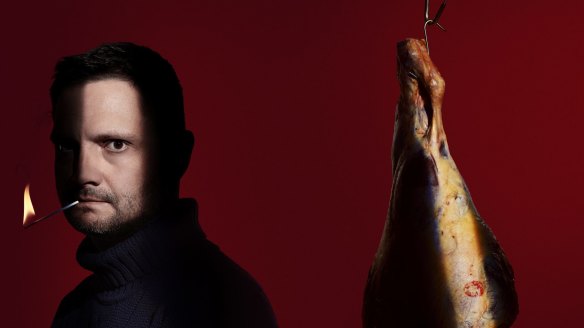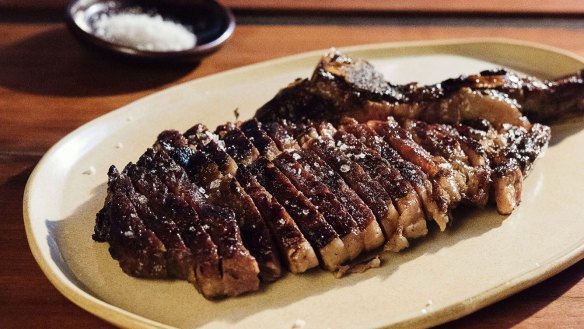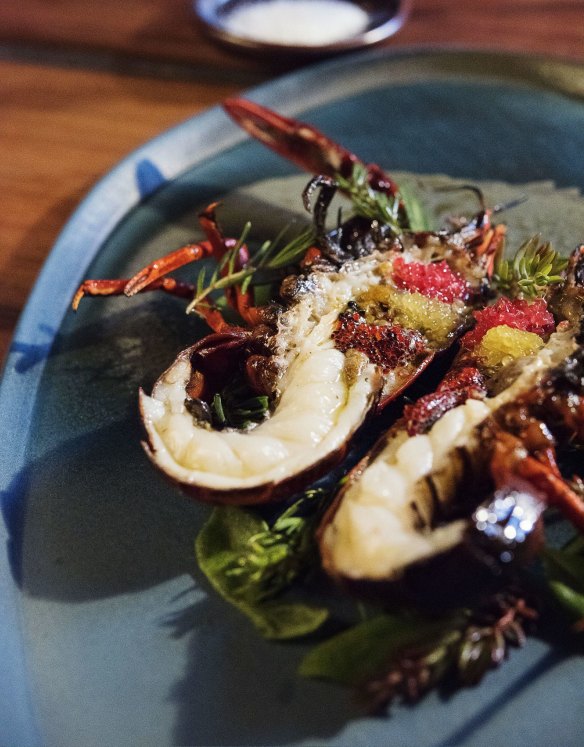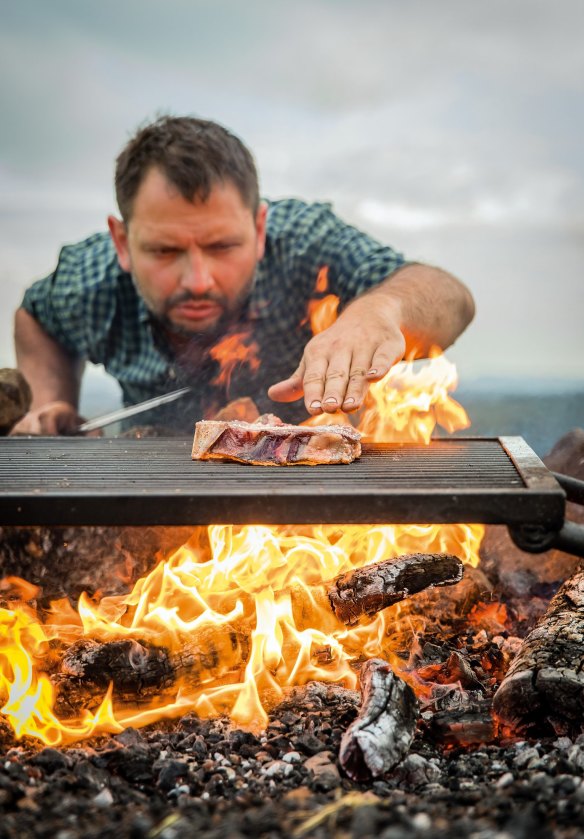Burning man: Firedoor chef Lennox Hastie on harnessing fear through fire

The obsession that fuels the Good Food Guide's Citi Chef of the Year, Lennox Hastie.
Anyone who's stood close enough to a fire burning at 900 degrees (hot enough to make glass melt, not quite hot enough to fully dispose of a body) will say you don't want to stand there for too long. Unless, of course, you're talking to Firedoor's Lennox Hastie.
There's no gas or electricity at his restaurant. You can't boil a pot of water in this kitchen unless you've made a fire first – that's probably as close to off-grid cooking as you'll get in the middle of the city. He may have had four-and-a-half years in the kitchen at Sydney's Firedoor, but he still doesn't feel at ease. "I never get used to that raging heat."

While Hastie rakes at the glowing embers in the massive wood oven that fuels the restaurant, he talks about the time he was cooking in a blizzard in Canada, when the door to the oven literally blew right off and flew two metres, such was the change in pressure and temperature. He'd never seen anything like it. "And that's why sometimes [the fire] scares me."
Watching him attempt to control the famously uncontrollable is what drives a lot of people to the restaurant. You get the impression pretty quickly it's a hard slog. And not just because of the temperature. There's the job of guarding the flames to make sure they stay live and under control. The heavy lifting and shovelling of molten embers.
At the end of a shift, many of the chefs wear a second skin of salt made of their own dried sweat, which Hastie describes as resembling "fine lace". Then there's the task of engaging with customers who watch him while he works in the open kitchen. It's a fraught performance from Hastie's side of the pass.
You can see it, you can feel it. Under any other circumstances, you'd probably run a mile.
Realistically, it's a style of cooking that, for chefs, works best behind closed doors, with no distractions. You wouldn't blame Hastie for giving into the temptation of concentrating solely on the job at hand – cooking beautiful food while not setting fire to himself – but he must also pay attention to his guests who are here for the show.
They want to see Hastie saw into their $200, 200-day dry-aged rib-eye. Watch him split a live marron. Gaze at those glowing embers. Get close to something dangerous.
There have been times when he's been cooking that steak in one section, that marron in another, and a wall of fire suddenly rises towards him. "You can see it, you can feel it. Under any other circumstances, you'd probably run a mile. You'd think, 'I want to get away from this', but you're right in the thick of it."

Hastie's worst fear is failing an ingredient – wasting that opportunity and its unrealised potential. "I don't think there's a better form of cooking in terms of the natural expression of the ingredients and everything else that goes behind it."
There are no shortcuts in the Firedoor kitchen. No flipping on the gas or combi oven. No boiling in a bag, no quick-fire turning and burning."That stuff is definitely idiot-proof," he says. "And I suppose I don't want to be an idiot."
He spends roughly $60,000 a year on firewood. If he used gas, it would cost about half that. But cooking with wood is different. To Hastie, it's so much more than a power source. It's an ingredient.

Hastie first learned to cook in this style at the world's most famous wood-fired restaurant, Asador Etxebarri in the Basque Country. Now, he's reached a point in his practice where it's about fine-tuning his obsession, treating wood as a product of age and terroir. "I'm always asking where the wood comes from, how old it is, when it was felled. That's more important to me now. That's my next exploration."
He considers the seasoning, or age, of the wood as important as the seasoning he adds to his ingredients before cooking. A peach tree, for instance, takes two years' storage before it's at its best. "It's a bit like the beef. The beef is already a great steak but then ageing it for 200 days takes it somewhere else. Waiting for it to be ready is part of the process. A fresh fruit tree (however great the fruit tree is), is going to burn like crap."
Hastie's menu is one of pared-back, gentle intensity. There might be barely cooked squid with black-ink noodles. Despite flames that swirl and embers that could ruin a piece of Murray cod in a minute if his attention wanders, there's no char in sight. He considers bar marks on his food a failure. But despite his attention, wood doesn't always burn as expected. If this happens, it means starting from scratch.

"Sometimes your heart is in your mouth. This kitchen, before the fire is lit, can feel soulless, and I know I've got no means of cooking. I'll have a full restaurant coming in and it's like, 'How the hell am I going to do this?'"
But he does, night after night – while the Australian food scene watches and learns.
The Good Food Guide's third annual national edition, with hats awarded across Australia, was launched on September 30 with our presenting partners Vittoria Coffee and Citi. The Good Food Guide 2020 is on sale now in newsagencies and bookstores, and at thestore.com.au/gfg20, $29.99 with free shipping.
Restaurant reviews, news and the hottest openings served to your inbox.
Sign up